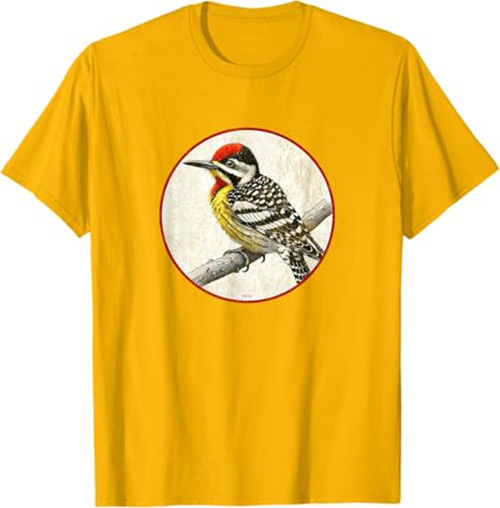Yellow-Bellied Sapsucker
Yellow-bellied Sapsucker (Sphyrapicus varius) is a colorful and energetic woodpecker with a name that sounds like pure folklore—but this bird is as real (and fascinating) as they come. Found across North America’s forests, from Canada to the southeastern U.S., the Yellow-bellied Sapsucker is best known for its neat rows of tiny holes drilled into tree bark—its signature method of feeding.
With a bold black-and-white pattern, a bright red crown, and a subtle wash of yellow on its underbelly, this medium-sized woodpecker is both eye-catching and cleverly camouflaged among the trees. Males sport a red throat, while females have a white one, but both share the same industrious habits.
True to its name, the Yellow-bellied Sapsucker feeds primarily on tree sap, using its chisel-like bill to drill horizontal rows of holes in live trees. It laps up the sweet sap with its specialized brush-tipped tongue and also snacks on insects drawn to the sticky buffet. Their preferred trees include birches, maples, and other sap-rich species, and their feeding wells sometimes support entire mini-ecosystems of other animals and insects.
During breeding season, these birds add rhythmic drumming and nasal mewing calls to the forest soundscape. They nest in cavities carved into dead trees or limbs, where both parents raise a brood of noisy, demanding chicks.
Though playful-sounding, the Yellow-bellied Sapsucker is a vital member of the woodland community—an architect of sap wells and a subtle shaper of forest health.
Symbolizing resourcefulness, rhythm, and the quiet complexity of nature, this sapsucker proves that even the smallest birds can leave a lasting mark—one tiny hole at a time.


